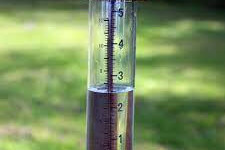General News
9 February, 2024
Hot day and a wet month
LODDON communities started February with rising temperatures and busy days at the shire’s five swimming pools. Temperatures across many parts of the shire tipped over 40 degrees on Sunday. The official reading at Charlton was 39.9 degrees. The dry...

LODDON communities started February with rising temperatures and busy days at the shire’s five swimming pools.
Temperatures across many parts of the shire tipped over 40 degrees on Sunday. The official reading at Charlton was 39.9 degrees.
The dry and warm start to the month was in contrast to January with rainfall recorded over much of the first fortnight.
West Prairie recorded its highest ever January daily figure when 79mm was tipped from the gauge on January 8 as the district headed to a 136mm monthly total. Readings have been recorded at West Prairie since 2011.
Other Loddon communities saw January figures more than triple the average.
January 3 and 8 had the heaviest rainfalls for the month in Inglewood and Wedderburn. The monthly average of 28.4mm in Wedderburn was smashed with 132.2mm record, including 61.4 on January 3.
Boort had its heaviest fall on January 17 and finished the month with 86.2mm compared with the average of 25.4mm.
Mincha also had its heaviest drop of rain on January 8 when 48.6mm was recorded. The month’s total was 133mm.
There were heavy falls in Dunolly on January 3, 8 and 17 of between 25mm and 30mm and a monthly total of 106mm.
Charlton saw 89.4mm tipped from the gauge in January, well up on the 32.3mm average.
However, the Bureau of Meteorology says February rainfall is likely to be below average across most of Australia. “February to April maximum and minimum temperatures are likely to be above median for most of Australia,” the BoM said in its forecast last Friday.
“February to April maximum temperatures are at least four times more likely than normal to be unusually high for north-western Australia, with minimum temperatures four times more likely than normal north of the Tropic of Capricorn.
“The long-range forecast is influenced by several factors, including record warm oceans globally and El Niño.
“El Niño continues in the tropical Pacific Ocean. Model forecasts and observations indicate a continued decline of sea surface temperatures in the eastern and central tropical Pacific.”